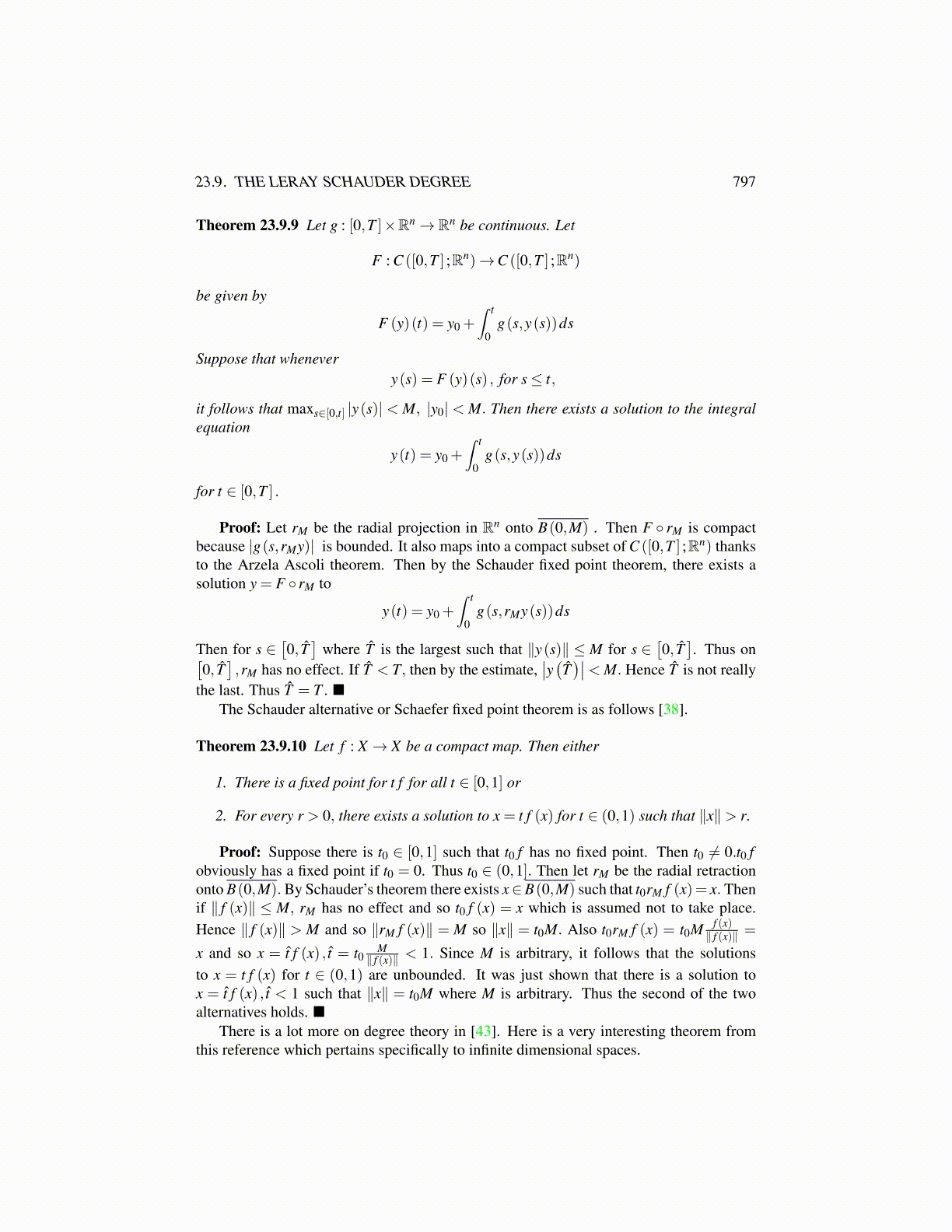
23.9. THE LERAY SCHAUDER DEGREE 797
Proof: By Theorem 16.2.5, K is a retract. Thus there is a continuous function R : X→Kwhich leaves points of K unchanged. Then you consider F ◦R. It is still a compact mappingobviously. Let B(0,r) be so large that it contains K. Then from the above theorem, it hasa fixed point in B(0,r) denoted as x. Then F (R(x)) = x. But F (R(x)) ∈ K and so x ∈ K.Hence Rx = x and so Fx = x.
There is an easy modification of the above which is often useful. If F : X→F (X) whereF (X) is bounded and in a compact set, and F is a compact map, then you could consider F :conv(F (X))→ F (X)⊆ conv(F (X)) where here conv(F (X)) is a closed bounded convexsubset of X . Then by the Schauder theorem, there is a fixed point for F .
Here is an easy application of this theorem to ordinary differential equations.
Theorem 23.9.9 Let g : [0,T ]×Rn→ Rn be continuous. Let
F : C ([0,T ] ;Rn)→C ([0,T ] ;Rn)
be given by
F (y)(t) = y0 +∫ t
0g(s,y(s))ds
Suppose that whenevery(s) = F (y)(s) , for s≤ t,
it follows that maxs∈[0,t] |y(s)| < M, |y0| < M. Then there exists a solution to the integralequation
y(t) = y0 +∫ t
0g(s,y(s))ds
for t ∈ [0,T ] .
Proof: Let rM be the radial projection in Rn onto B(0,M) . Then F ◦ rM is compactbecause |g(s,rMy)| is bounded. It also maps into a compact subset of C ([0,T ] ;Rn) thanksto the Arzela Ascoli theorem. Then by the Schauder fixed point theorem, there exists asolution y = F ◦ rM to
y(t) = y0 +∫ t
0g(s,rMy(s))ds
Then for s ∈[0, T̂]
where T̂ is the largest such that ∥y(s)∥ ≤ M for s ∈[0, T̂]. Thus on[
0, T̂],rM has no effect. If T̂ < T, then by the estimate,
∣∣y(T̂)∣∣< M. Hence T̂ is not reallythe last. Thus T̂ = T .
The Schauder alternative or Schaefer fixed point theorem is as follows [38].
Theorem 23.9.10 Let f : X → X be a compact map. Then either
1. There is a fixed point for t f for all t ∈ [0,1] or
2. For every r > 0, there exists a solution to x = t f (x) for t ∈ (0,1) such that ∥x∥> r.